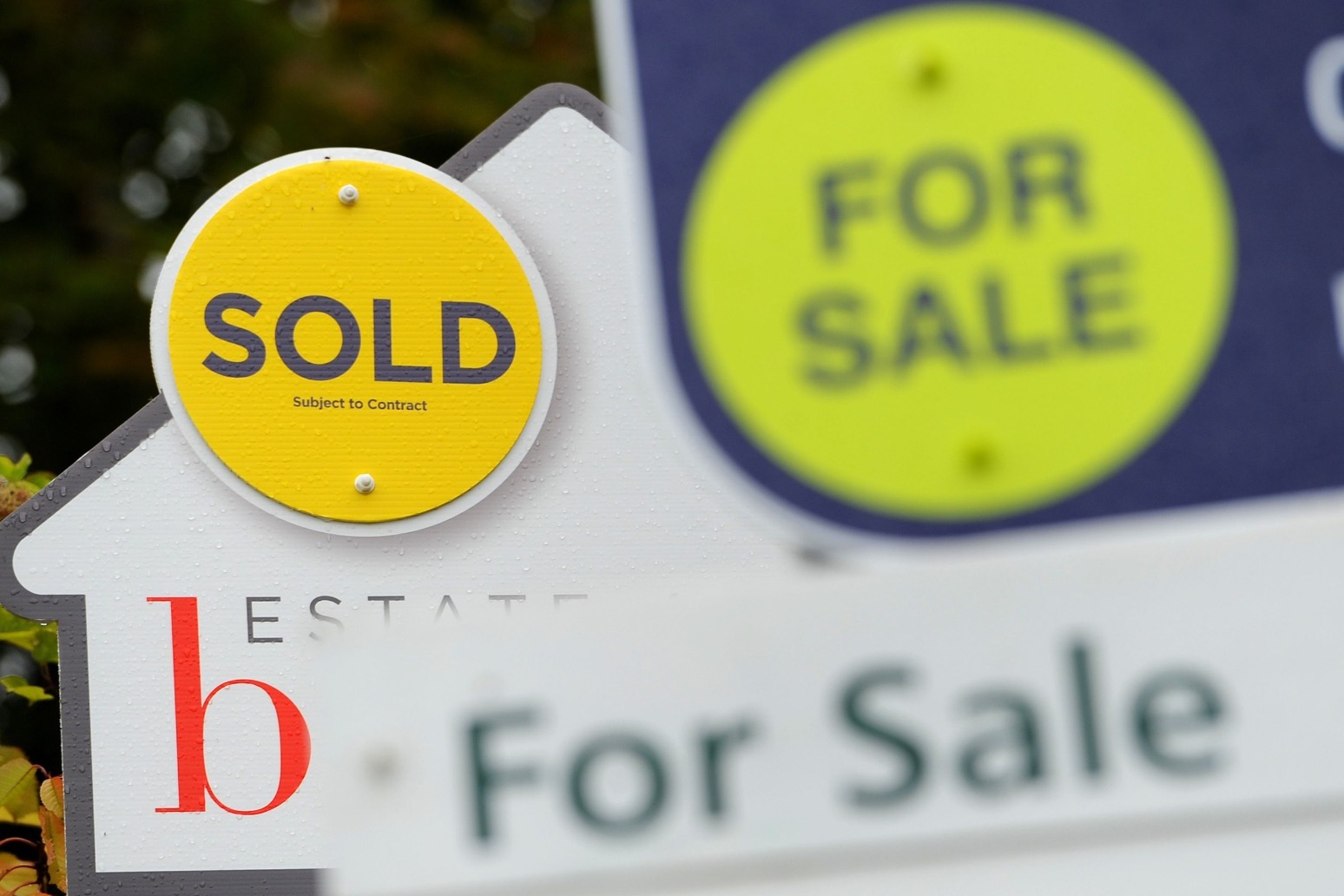
Average UK house price ‘soars by 10.8% annually to hit record high of £278,123’
House prices increased at the fastest annual pace since 2007 in February to hit a new record high, according to an index.
At 10.8%, the annual rate of house price growth was the strongest since June 2007, Halifax said.
The increase took the average house price across the UK to a new record high of £278,123.
Property values increased by 0.5% month-on-month.
Russell Galley, managing director, Halifax, said: “The UK housing market shrugged off a slightly slower start to the year with average property prices rising by another 0.5% in February, or £1,478 in cash terms.
“This was an eighth successive month of house price growth, as the resilience which has typified the market throughout the pandemic shows little sign of easing.
“Year-on-year prices grew by 10.8%, the fastest pace of annual growth since June 2007, pushing the average house price up to another record high of £278,123.
“Two years on from the start of the pandemic, average property values have now risen by £38,709 (16%) since February 2020. Over the last 12 months alone house prices have gained on average £27,215.
“This is the biggest one-year cash rise recorded in over 39 years of index history.”
Mr Galley said a lack of supply continues to underpin rising house prices.
This may be a particular issue at the larger end of the property market, he added, with detached homes rising in price by £43,251 or 11% over the past year, compared with £10,462 or 7% price growth for flats.
He continued: “Looking ahead, as Covid moves into an endemic phase and almost all domestic restrictions are removed, geopolitical events expose the UK to new sources of uncertainty.
“The war in Ukraine is a human tragedy, but is also likely to have effects on confidence, trade and global supply chains.
“Surging oil and gas prices are one immediate consequence, meaning that inflation in the UK – already at a 30-year peak – will remain higher for longer.
“This will add to the squeeze on already stretched household incomes. While increases in bank rate (the Bank of England base rate) look likely in the near term, the extent of the rises will depend on how it affects prices and companies’ approaches to pay over the months to come.
“These factors are likely to weigh on buyer demand as the year progresses, with market activity likely to return to more normal levels and an easing of house price growth to be expected.”
Halifax said looking across the UK, Wales remained the strongest performing area, with annual house price growth of 13.8%, taking the average property price there to £207,184.
The South West of England also recorded a strong annual house price gain of 13.4%.
Northern Ireland also recorded strong price growth, with prices up 13.1% on a year earlier, taking the average property value in February to £173,911.
Scotland meanwhile had the “weakest” rate of house price growth outside London, Halifax said, despite an annual increase of 9.2% – reflecting the strength of house prices right across the UK. The average property price there was £193,777 in February.
London remained the weakest performing area of the UK, with annual house price growth of 5.4%.
Jeremy Leaf, a north London estate agent and a former residential chairman at the Royal Institution of Chartered Surveyors (Rics) said: “Prices may be continuing to rise to record levels but looking behind the numbers we are finding in our offices that this is more as a direct result of lack of choice, which is also compromising the number of transactions.
“Prices are unlikely to continue their mighty gains as affordability is becoming increasingly stretched, with events in Ukraine likely to send inflation and especially energy costs even higher.”
Nicky Stevenson, managing director at estate agent Fine & Country said: “Persistent high price growth is likely to remain the norm unless we see a profound increase in new listings later in the year.”
Here are average house prices across the UK in February according to Halifax, and the annual increase:
– East Midlands, £228,289, 11.6%
– Eastern England, £325,687, 11.4%
– London, £530,469, 5.4%
– North East England, £160,874, 9.9%
– North West England, £212,920, 11.1%
– Northern Ireland, £173,911, 13.1%
– Scotland, £193,777, 9.2%
– South East England, £378,441, 10.5%
– South West England, £293,968, 13.4%
– Wales, £207,184, 13.8%
– West Midlands, £234,481, 9.7%
– Yorkshire and the Humber, £192,010, 9.8%
Published: by Radio NewsHub